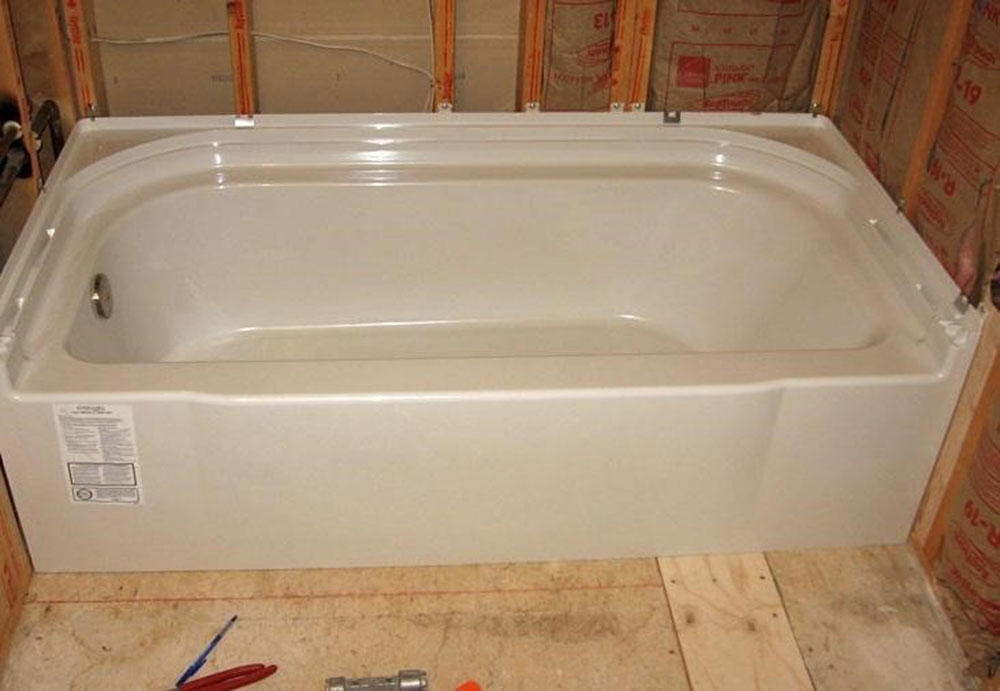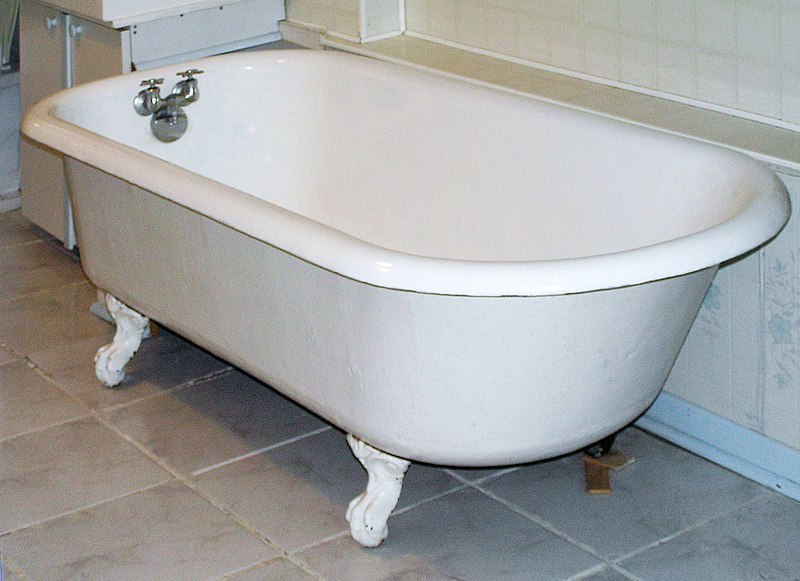What're your beliefs about A Step-by-Step Guide to Installing a Bathtub?

Mounting a bathtub isn't precisely brain surgery, yet it does require solid plumbing, carpentry, as well as occasionally, tiling skills. Replacing an old tub with a brand-new one is also a moderately tough task. If the old tub is readily accessible, the project can move rapidly; if you need to open up a wall to remove the old tub as well as place the brand-new bathtub, the job is much harder. In either case, the task is within a home handyman's skills, although you will require an assistant to vacate the old bathtub and set in the new one. See to it you have qualified yourself for the task as well as fit trying it. As opposed to working with a contractor to take over a halfway-completed project, it is better to think about employing one before you start. Opportunities are you may require a specialist plumber to make tube links.
This article will assist you set up a brand-new bath tub in your bathroom if you have already purchased a new tub and don't need to change the plan of your previous water system pipelines.
Your devices and also product list need to comprise the following:
Removing Old Touches
If you require to change old faucets with brand-new ones as a part of your setup, then the first thing you ought to do is detach the water system. After doing so, turn on the faucets to drain pipes any type of water staying in the system. The process of removing the existing taps can be fairly bothersome because of the restricted accessibility that is commonly the situation.
Utilize a basin wrench (crowsfoot spanner) or a faucet device to undo the nut that connects the supply pipelines to the faucets. Have a fabric ready for the continuing to be water that will certainly originate from the pipelines. When the supply pipes have actually been eliminated, utilize the same device to loosen up the nut that holds the taps onto the bath/basin. You will certainly require to stop the single faucets from turning throughout this process. Once the faucets have been removed, the holes in the bath/basin will certainly have to be cleaned of any kind of old sealing compound.
Prior to proceeding to fit the new taps, contrast the pipe connections on the old faucets to the new faucets. If the old faucets are longer than the new faucets, then a shank adapter is needed for the brand-new taps to fit.
Suitable New Taps
If the tails of the new taps are plastic, after that you will need a plastic adapter to prevent damages to the thread. One end of the connector fits on the plastic tail of the faucet and the various other end supplies a connection to the existent supply pipelines.
If you need to fit a monobloc, after that you will require minimizing couplers, which connects the 10mm pipeline of the monobloc to the basic 15mm supply pipeline.
Next, place the tap in the placing hole in the bath/basin making certain that the washers are in area between the tap and the sink. Safeguard the tap in position with the maker provided backnut. As soon as the tap is firmly in place, the supply pipelines can be connected to the tails of the faucets. The taps can either be attached by using corrugated copper piping or with regular tap adapters. The former kind must be connected to the faucet ends initially, tightening just by hand. The supply pipelines can later be linked to the other end. Tighten up both ends with a spanner after both ends have been connected.
Mounting the Bathtub
Making use of the two wood boards under its feet, place the tub in the needed position. The wood boards are helpful in uniformly spreading out the weight of the tub over the location of the boards instead of concentrating all the weight onto four little factors.
The next objective is to ensure that the tub is leveled all round. This can be achieved by examining the spirit level and also readjusting the feet on the bathtub up until the level reviews level.
To install faucets, fit all-time low of the outermost flexible tap connector to the suitable supply pipeline by making a compression sign up with; after that do the same for the other tap.
Turn on the water and check all joints as well as brand-new pipework for leakages and also tighten them if necessary. Load the bathtub and also check the overflow outlet as well as the regular outlet for leaks.
Lastly, take care of the bathroom paneling as described in the producer's user's manual. Tiling and also securing around the bathtub must wait till the bath tub has been used a minimum of when as this will certainly resolve it into its final setting.
Getting ready for the Installment
First of all, the sustaining structure provided with the bath should be fitted (if required) according to the producer's directions. Next off, fit the faucets or mixer to the bathtub. When fitting the tap block, it is very important to make certain that if the faucet features a plastic washing machine, it is fitted in between the bath and the taps. On a plastic bath, it is also sensible to fit a supporting plate under the taps unit to prevent strain on the bathtub.
Fit the flexible faucet adapters to the bottom of both taps utilizing 2 nuts as well as olives (in some cases supplied with the tub). Fit the plug-hole outlet by smearing mastic filler round the sink outlet opening, and afterwards pass the electrical outlet with the hole in the bath. Utilize the nut supplied by the producer to fit the plug-hole. Analyze the plug-hole outlet for an inlet on the side for the overflow pipe.
Next, fit completion of the adaptable overflow pipeline to the overflow electrical outlet. Afterwards, screw the pipe to the overflow face which ought to be fitted inside the bath. Make sure you use all of the supplied washers.
Connect the catch to the bottom of the waste electrical outlet on the tub by winding the thread of the waste outlet with silicone mastic or PTFE tape, and screw on the catch to the outlet. Connect the bottom of the overflow tube in a similar manner.The bath need to currently prepare to be fitted in its final position.
Tiling Around the Bath tub
In the location where the bath meets the tile, it is essential to secure the joins with a silicone rubber caulking. This is essential as the fitting can relocate enough to fracture a stiff seal, creating the water to pass through the wall surface in between the bathroom as well as the tiling, causing problems with dampness and also feasible leaks to the ceiling below.
You can choose from a selection of coloured sealers to blend in your fixtures and installations. They are marketed in tubes and cartridges, and are capable of sealing spaces up to a size of 3mm (1/8 inch). If you have a bigger space to fill, you can load it with spins of drenched newspaper or soft rope. Remember to constantly fill up the tub with water before securing, to enable the movement experienced when the bathtub remains in use. The sealer can split relatively early if you do not take into account this motion before securing.
Additionally, ceramic coving or quadrant tiles can be made use of to border the bath or shower tray. Plastic strips of coving, which are easy to use as well as cut to size, are additionally quickly available on the marketplace. It is recommended to fit the tiles making use of water-resistant or water-proof sticky and cement.
Bathtub Installation
How Important Is A Bathtub To Your Home?
High-quality baths, showers, and other bathroom updates are necessary when considering a smart investment in your home. It’s a room that you go to every day and one that is constantly being used by guests.The bathroom is one of the top trafficked rooms in a home and also one of the most valuable in terms of home resale.
Install Piping Before Tub
You will be using your existing drain and waste vent system, but pipes required include the hot and cold water supply lines and a pipe leading to a shower head. A mixing valve and shower head are also needed. Air chambers may be required.
Position the Tub
Lower the tub into place so that the continuous flange fits against the wall studs and rests on 1’x4' or 2’x4' supports. Anchor the tub to the enclosure with nails or screws inserted through the flanges into the studs.
NOTE: Remember, bathtubs and shower stalls may require support framing. A bathtub filled with water is extremely heavy, so check building codes and framing support before installing the tub.
Assemble Drain Connections
Assemble the bathtub drain connections by connecting the tub overflow with the tub drain above the trap, not beyond it. The trap will have a compression fitting that screws over the arm of the overflow assembly.
Place a Pipe For the Shower Head
First, locate a brass female threaded winged fitting and attach it to a framing support via a screw or a nail. Then run a pipe up the wall for the shower head. Sweat or solder the other side of the brass fitting to the top of the pipe.
Attaching Hot and Cold Water Lines
Attach your water lines for both hot and cold by sweating these directly into the hot and cold ports of the mixing valve. The mixing valve will be how water enters the tub’s system, not by the pipes themselves.
Install the Spout
Extend a piece of 1/2 inch pipe, or whichever length is specified in the manufacturer’s instructions, for the tub spout. Sweat on a male threaded fitting at the end of the pipe or use a brass nipple of the proper length and a 1/2 inch cap.
NOTE: At this point you should have your rough-in plumbing work inspected before proceeding further.
Check For Leaks
Restore the water pressure and check the drain connection and the supply pipes for any sign of leaking.
estore the Bathroom Wall
Replace the wall with moisture-resistant drywall as a base for your wall covering. Seal the joints between the wall and your new tub with silicone caulk as protection against water seepage.
https://www.berkeys.com/2016/12/02/bathtub-installation-dallas/

I'm certainly very serious about A Step-by-Step Guide to Installing a Bathtub and I'm hoping you liked the entire blog post. Are you aware of somebody who is serious about the subject? Take a moment to share it. Thank-you for your time invested reading it.
Get Estimate